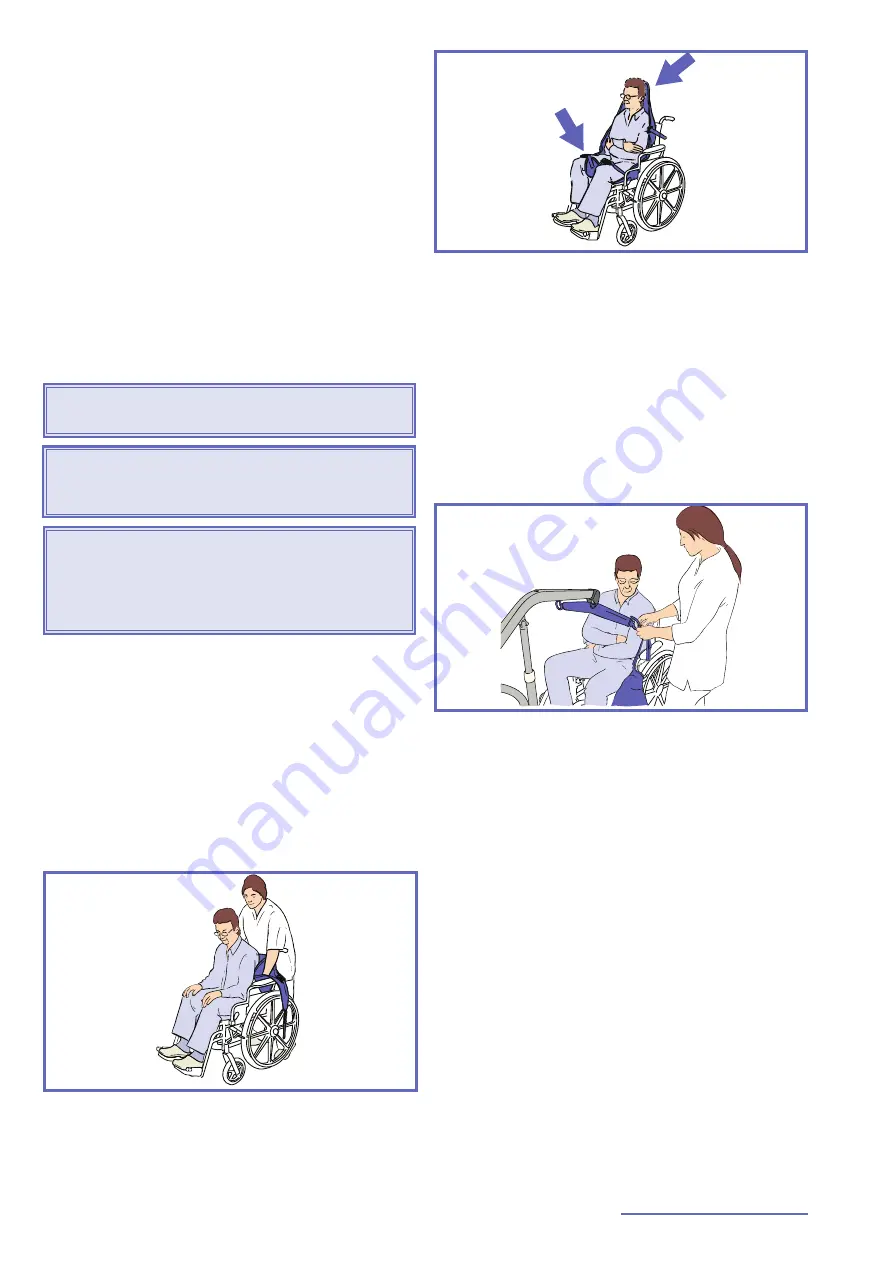
001.23104.EN rev
. 6
Loop Slings Application
20
Transferring Patients Using Loop
Slings
Before using the
MAXI LITE
ensure that:
• A clinical assessment of the patient’s
suitability for transfer is carried out by a
qualified health professional considering
that, among other things, the transfer
may induce substantial pressure on the
patient’s body.
• Special consideration is taken when
transferring a patient who is connected
to electrodes, catheters, or other
medical devices.
• Always carry out the items marked as
“Before every use” in the “Preventive
Maintenance Schedule” before using
the lift.
WARNING
: To avoid injury or discomfort, do
not lower the spreader bar onto the patient.
WARNING
: Always hold the spreader bar
when near a patient. The spreader bar could
hit the patient resulting in injury.
WARNING
: Make sure the sling is not caught
on any obstructions (for instance, the
wheelchair brakes or armrests). Sling
catching in such obstructions could result in
patient fall.
Lifting Patient from a Seated Position
The techniques described here can be used for
transferring patients regardless of where they
may be seated (e.g. in a bed, in a chair,
wheelchair or similar).
1) Place the sling around the patient so that
the base of the sling sits slightly below the
tail bone.
A MaxiSlide
®
or MaxiTube
®
positioning aid
can be used to assist with placement of the
sling.
Fig. 42
2) Ensure that the head support area of the
sling is behind the head covering it.
3) Pull each leg strap under the thigh so that it
emerges on the inside of the thigh.
Fig. 43
4) Approach the patient with the lift, ensure
that:
• the spreader bar is at or just below
shoulder level;
• the spreader bar is close enough to be
able to fix all the sling loops onto the
spreader bar hooks.
5) Connect the shoulder loops, and then the
leg section using one of the three methods
previously described.
6) If necessary, lower the spreader bar a little
further.
Fig. 44
7) Raise the patient using the hand control,
positioning him comfortably to a semi-
reclined position for the transfer. The patient
should not be lifted above the caregiver’s
eye level.
8) Turn the patient to face the caregiver, and
keep at a normal chair height.
9) Proceed with the transfer.
Lowering Patient to a Seated Position
1) Once the patient has arrived at destination,
reposition the patient according to the
destination position.
2) Lower the patient down onto the new
location.
3) When the patient’s body weight is fully
supported, detach the sling.
4) Move the lift away from the patient.
5) Remove the sling from under the patient.















































